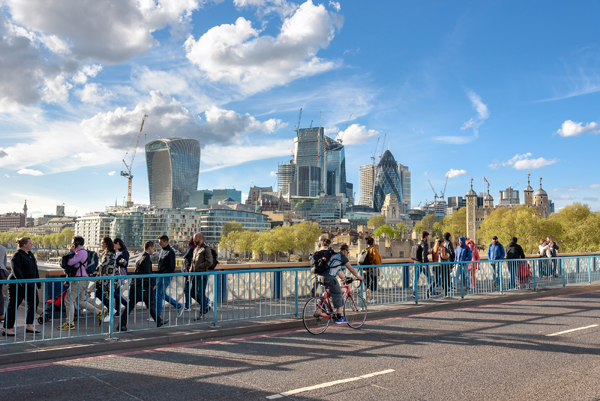
London, the capital city of the United Kingdom, is renowned for its extensive and efficient public transportation system. The city offers a variety of public transportation options including the London Underground (commonly known as the Tube), buses, trams, the Docklands Light Railway (DLR), London Overground, and river services. With such a comprehensive network, it’s entirely possible for an expat living in London to comfortably live without a car, relying solely on public transportation and walking. In fact, many Londoners do just that, as owning a car in the city can be more of a hassle than a convenience due to congestion charges, parking difficulties, and heavy traffic.
The London Underground (Tube)
The London Underground, affectionately known as the Tube, is the city’s rapid transit system and a primary method of transportation for many Londoners. It’s the oldest underground railway network in the world and serves 270 stations. The Tube is generally safe to use at all times of day, with CCTV cameras in operation at all stations and on board the trains. It’s also safe for women travelling alone and for children, although as with any large city, it’s always advisable to stay alert and aware of your surroundings. A single journey within Zone 1 costs £4.90, but using an Oyster card or contactless payment can reduce this to £2.40. The Tube operates from around 5am to midnight, with a Night Tube service running on selected lines on Friday and Saturday nights.
Buses
London’s iconic red double-decker buses are a convenient and affordable way to get around the city, with thousands of buses serving over 19,000 stops across Greater London. Buses run 24 hours a day, with a Night Bus service operating after the Tube closes. A single bus journey costs £1.50, regardless of how far you travel. Buses are generally safe, with CCTV cameras in operation and a zero-tolerance approach to antisocial behaviour. They’re also a great way to see the city, offering views of London’s famous landmarks from the top deck.
Trams
London’s tram network operates in the south of the city, serving 39 stops across areas such as Croydon, Wimbledon, and Beckenham. Trams are a reliable and cost-effective mode of transport, with a single journey costing just £1.50. They’re also safe to use, with CCTV cameras in operation and regular patrols by Transport for London’s enforcement officers.
Docklands Light Railway (DLR)
The Docklands Light Railway (DLR) is an automated light metro system serving the redeveloped Docklands area of East London. It’s a reliable and efficient way to travel, with trains running every 3-10 minutes. A single journey within Zone 1 costs £2.40 when using an Oyster card or contactless payment. The DLR is safe to use, with CCTV cameras in operation and a dedicated team of DLR Travel Safe Officers who patrol the network.
London Overground
The London Overground is a suburban rail network serving parts of Greater London and Hertfordshire. It’s a convenient way to travel around the outskirts of the city, with trains running every 15 minutes on most lines. A single journey within Zone 1 costs £2.40 when using an Oyster card or contactless payment. The Overground is safe to use, with CCTV cameras in operation and regular patrols by Transport for London’s enforcement officers.
River Services
London’s River Services offer a unique way to travel around the city, with boats running along the River Thames between 22 piers. They’re a scenic and enjoyable way to travel, offering stunning views of London’s riverside landmarks. A single journey costs between £4.50 and £8.50, depending on the distance travelled. River services are safe to use, with lifejackets provided and strict safety regulations in place.


